Ever stared at your garden thinking, “I just need a plant that thrives in the sun, needs barely any attention, and still gives me vibrant flowers?” You’re not alone. That’s exactly what led me to discover lantana plants. These tough, low-maintenance flowering beauties are perfect for sunny spots and even better at attracting butterflies, bees, and hummingbirds. Whether you’re just starting your gardening journey or you’ve already got soil under your nails, learning how to grow lantana can totally change your landscape game.
Let me show you exactly how to grow lantana plants successfully—from scratch, with all the real-world tips you need.
What Are Lantana Plants?
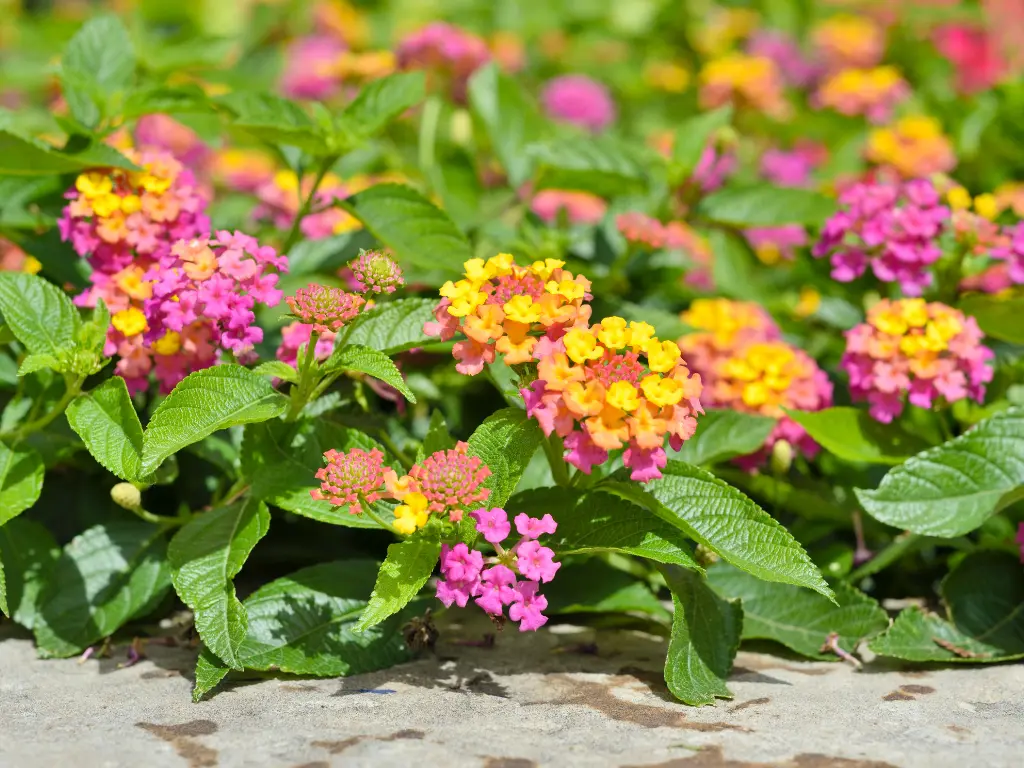
Lantanas are sun-loving, drought-tolerant flowering plants native to tropical regions. With clusters of tiny, brightly colored flowers, they bloom nonstop from spring through fall. Most common in USDA hardiness zones 8 to 11, lantana is a go-to plant for gardeners in hot, dry climates across the southern U.S.
They’re great for pollinator gardens, add vivid color to dull corners, and don’t mind a little neglect. Whether you live in Texas, Florida, or California, lantanas are one of those plant picks that almost always pay off.
Lantana Varieties You Should Know
-
Lantana camara: Most popular, colorful, and widely available. Ideal for borders.
-
Lantana montevidensis: A trailing type, perfect for hanging baskets or ground cover in large areas.
-
Hybrid lantanas: Bred for compact growth and extended bloom time. Great for container gardening.
These plants are not only perennial in warmer zones but also grow well in pots, containers, and mixed landscape borders. They even make great gift plants for friends who aren’t that into high-maintenance gardening.
Read more: Lantana Rose Sunrise: The Ultimate Guide to Growing This Vibrant Beauty
How to Plant Lantana
1. Choose the Right Spot
Lantanas absolutely adore the sun. Think of them as little sun-chasers—if you want constant color, make sure they get 6-8 hours of full, direct sunlight each day. A south- or west-facing spot in your yard is usually ideal.
Soil-wise, they’re not fussy. Got sandy soil? Perfect. Rocky ground? Still fine. But what they really hate is soggy, poorly draining soil. If your garden has heavy clay, do your plants a favor and mix in some compost or sand to lighten things up.
Pro tip: Plant them somewhere they’ll have space to spread a bit—lantanas love to sprawl!
2. When to Plant Lantana
Timing is everything! Lantanas are sensitive to cold, so hold off planting until the danger of frost has fully passed. Late spring is ideal in most areas.
Live in a warmer climate like the southern U.S.? You’re lucky—lantanas can be planted almost all year round. Just make sure the soil temperature is consistently above 60°F so they can get cozy and establish roots properly.
If you’re unsure, a simple soil thermometer or even just warm soil to the touch is a good enough sign.
3. Seeds vs Cuttings
-
Growing from seeds: More variety, but slower. Soak the seeds overnight to improve germination.
-
Growing from cuttings:
Take a healthy 4-6 inch stem, strip the lower leaves, dip it in rooting hormone (available at garden stores), and plant it in moist potting mix. Keep it warm and slightly humid while it roots—placing a clear bag over the pot can help create a mini greenhouse effect.
Want a shortcut? Buy young lantana plants from a local nursery or a trusted online store. It’s perfect if you’re eager to see blooms faster.
Lantana Plant Care Tips
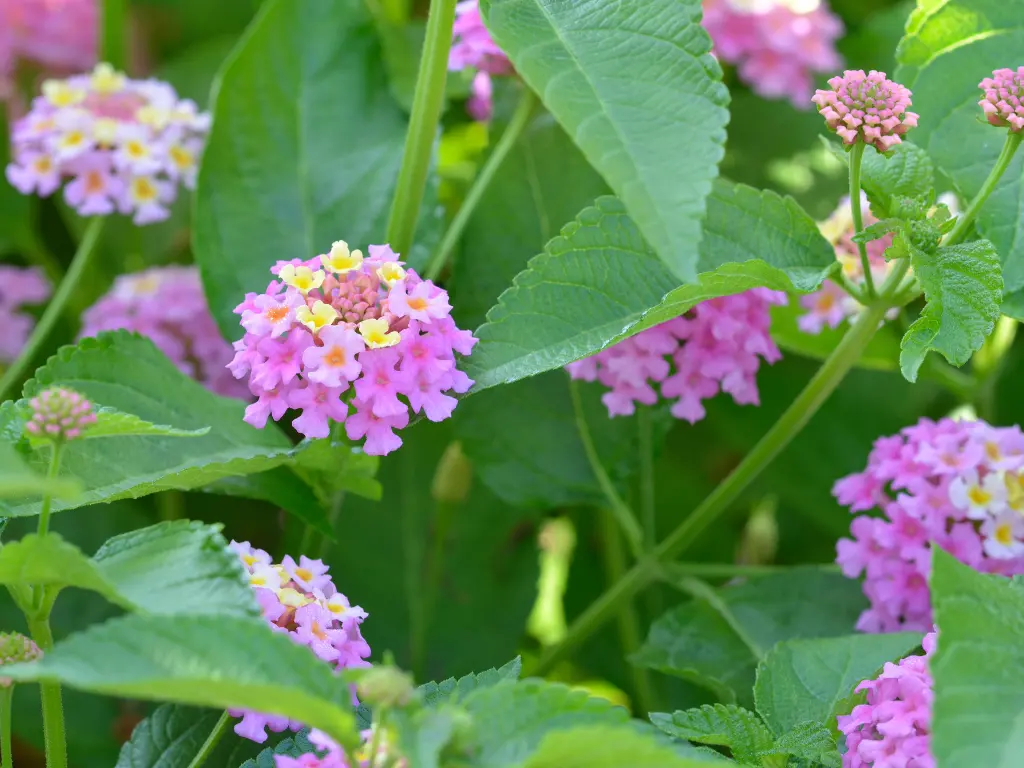
These plants actually prefer a little neglect.
1. Watering
Lantanas are drought-tolerant, meaning they don’t need frequent watering. In fact, too much water is one of the fastest ways to make them unhappy. Once your plant is established, a deep watering once a week is usually all it needs. Let the top inch of soil dry out between waterings.
If you’re growing lantana in a container or live in an extra-hot region, you might need to water more often—just always check the soil moisture first.
Tip: If the leaves start yellowing or dropping, that might be a sign of overwatering.
2. Fertilizing
Here’s a little-known secret: less is more when it comes to fertilizer. Too much nitrogen will give you lush green leaves but few flowers—and we’re here for the blooms, right?
Stick with a balanced slow-release fertilizer when you first plant. If your lantana looks a little tired midseason, you can give it a small boost—but skip the heavy feeding schedule. These plants thrive on minimal pampering.
3. Pruning
Don’t be shy with your pruners! Pruning encourages bushy, compact growth and helps your plant push out more flowers.
In early spring, cut back old or leggy growth to shape the plant. Throughout the blooming season, remove spent flowers (a process called deadheading) to keep it looking fresh and blooming longer.
Fun fact: A hard prune can actually help revive a lanky or underperforming lantana.
You may like:
- Pruning Passion Flower Vine: When and How to Do It Right
- Honeysuckle Vine Pruning Tips You Need to Know
4. Watch for Pests
Lantana is generally tough against pests, but you might occasionally spot a few troublemakers. Keep an eye out for:
- Aphids: Small green or black bugs on new growth
- Whiteflies: Tiny white insects that flutter around when you touch the plant
- Spider mites: Look for fine webs and tiny yellow spots on leaves
If you see signs like curling leaves, sticky residue, or stunted growth, treat them with neem oil, insecticidal soap, or even a blast of water from the hose.
The good news? Healthy lantana plants usually fend off pests pretty well, especially if they’re getting enough sun and not too much water.
Growing Lantana in Pots or Containers
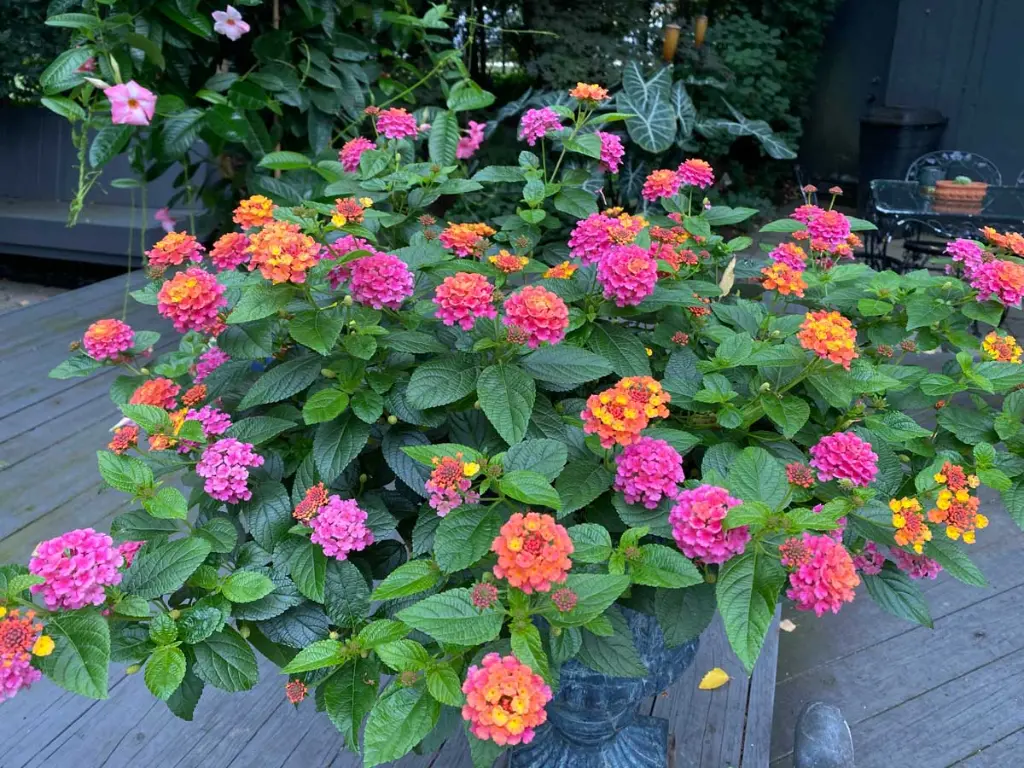
Perfect for patios or balconies? Absolutely. Container-grown lantanas are great for renters, apartment dwellers, or anyone short on space.
Tips for Potted Lantana:
-
Use a pot with drainage holes
-
Use well-draining potting mix (avoid heavy soil)
-
Water more frequently than ground-planted lantana, especially in summer
Pick a sunny spot like a front porch, back deck, or window box. Just make sure it gets plenty of direct sun.
Overwintering Indoors
In colder regions, bring pots indoors before the first frost. Place them in a sunny window or under grow lights. Reduce watering during the winter and avoid fertilizing until spring.
Common Mistakes to Avoid
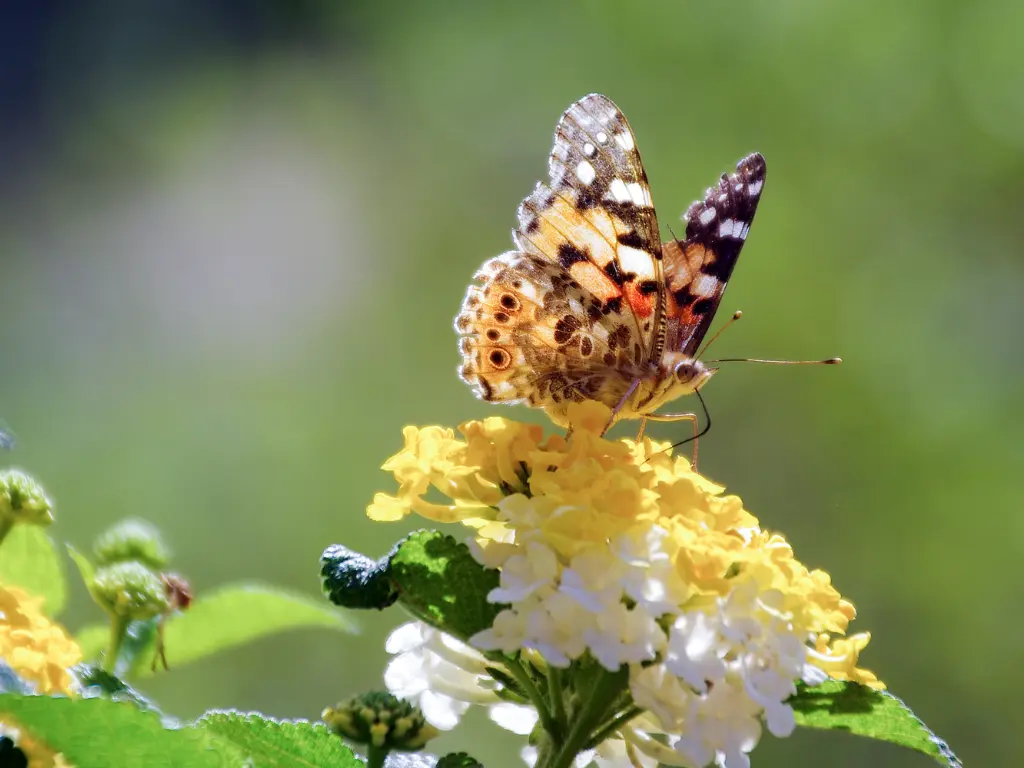
Here are a few things I learned the hard way—and wish someone had told me earlier:
-
Overwatering: It’s easy to think you’re helping, but too much water leads to root rot and a sad-looking plant. Let the soil dry out between waterings. Remember: Lantana loves it dry.
-
Too much shade: Lantanas are sun worshippers. If you plant them in a spot with limited sunlight, they’ll get leggy and produce fewer flowers. More sun equals more blooms—simple as that.
-
Neglecting pruning: It’s tempting to let them grow wild, but regular trimming keeps your plant compact, encourages new growth, and leads to a much prettier shape overall.
-
Over-fertilizing: This one surprised me. I used to think more fertilizer meant better growth. But for lantanas, it just creates a bunch of leafy green growth with almost no flowers. Use a light hand.
Avoiding these common mistakes will make a world of difference. Stick to the basics, observe your plant, and adjust as you go—your lantana will thrive with just a little love and attention.
Companion Plants and Landscaping Ideas
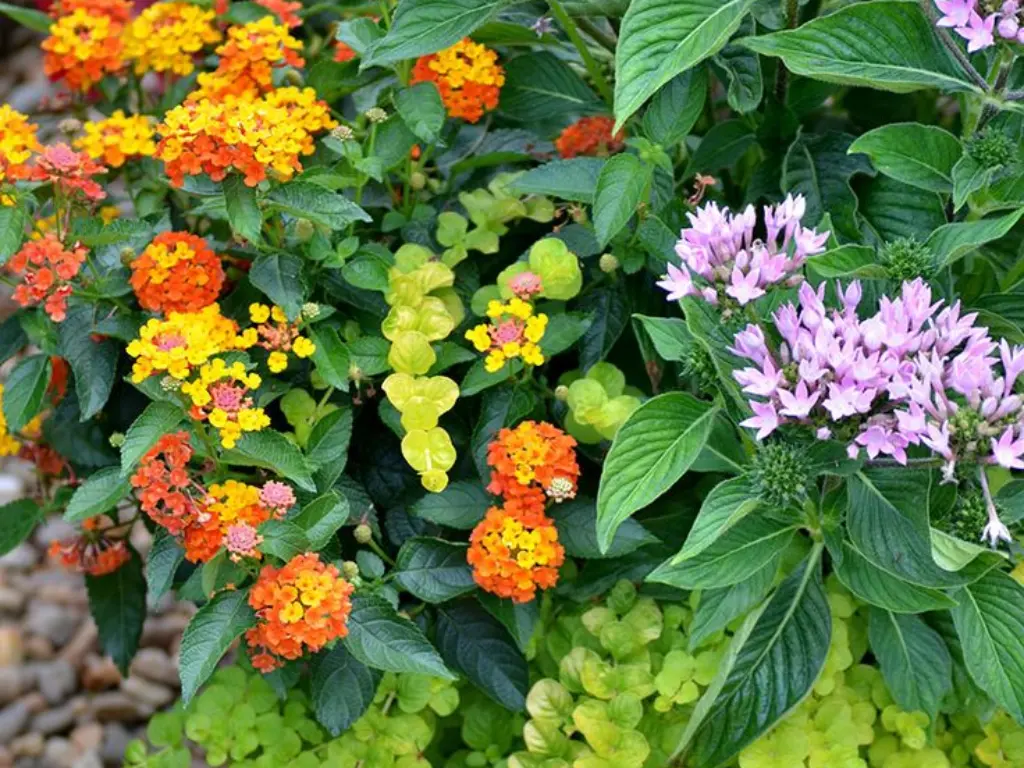
Lantanas are amazing team players in any garden design. They not only shine on their own but also help highlight the beauty of surrounding plants. Whether you’re designing a buzzing butterfly garden or refreshing your front yard beds, lantanas make the perfect garden buddies.
Great Companion Plants for Lantana:
-
Salvia: These spiky flowers not only bloom in sync with lantana but also attract pollinators like bees and hummingbirds. Together, they create a riot of color and movement.
-
Verbena: With its mounding habit and complementary shades, verbena works beautifully at the edges of garden beds or in hanging baskets.
-
Marigold: Not only are they cheerful and bold, but they also help keep pests at bay—especially near veggie patches.
-
Coneflowers: These sturdy perennials offer height, structure, and long-lasting blooms. Plus, butterflies love them!
Where to Use Lantana in the Landscape:
-
Butterfly gardens: Lantana is a magnet for butterflies. Plant them with nectar-rich flowers to create a fluttering paradise.
-
Rock gardens: Their drought resistance makes them a smart, colorful choice for rocky or sandy areas.
-
Mixed borders: Blend them with ornamental grasses, daylilies, or lavender for texture and contrast.
-
Hanging baskets: Trailing lantana varieties spill beautifully over the sides, making them eye-catching centerpieces.
-
Coastal gardens: They handle salty air and sandy soil like champs, perfect for seaside homes.
Think of lantanas as the cheerful extroverts of your garden party—bringing the color, the charm, and the guests (hello butterflies!). Plant a few and you’ll soon find your outdoor space buzzing with life and personality.
FAQs About Growing Lantana
1. Can lantana survive winter in cold climates?
Not outdoors in USDA zones below 8. However, you can bring them indoors in containers and place them near a sunny window or under grow lights. They might go semi-dormant, but they’ll bounce back in spring. Another option is to treat them as annuals and replant each year—especially if you’re in a colder zone.
2. How long does it take for lantana to bloom?
New lantana plants typically begin blooming within 6 to 8 weeks of planting, depending on the variety and growing conditions. With proper care—sunlight, light watering, and minimal fertilizer—you’ll enjoy continuous blooms all the way until the first frost. They’re real overachievers in the flower world.
3. Are lantana plants toxic to pets?
Yes, lantana can be toxic to cats, dogs, and even livestock if ingested. Symptoms include vomiting, diarrhea, and weakness. It’s best to plant them in areas your pets can’t access—or choose an alternative if you’ve got curious four-legged friends. Always check with your vet if you suspect any plant toxicity.
4. Why is my lantana not flowering?
A non-blooming lantana is usually sending you a message. Check for these common issues:
-
Not enough sunlight: Lantanas need full sun to bloom. At least 6-8 hours a day.
-
Overwatering: Wet roots lead to stress and fewer blooms.
-
Too much fertilizer: Especially nitrogen, which promotes leafy growth over flowers.
-
Lack of pruning: Regular deadheading and seasonal trimming stimulate more flower production.
Once you dial in the sunlight and ease off the water and fertilizer, you’ll usually see a big difference within a couple of weeks.
Final Thoughts
If you’re looking for a flowering plant that delivers bold color with almost zero fuss, lantana is it. With just a little effort, you can enjoy months of blooms and a yard full of butterflies, bees, and bright energy.
Try growing lantana this season. You’ll fall in love with how easy they are—and how much they give back.
Explore More:
